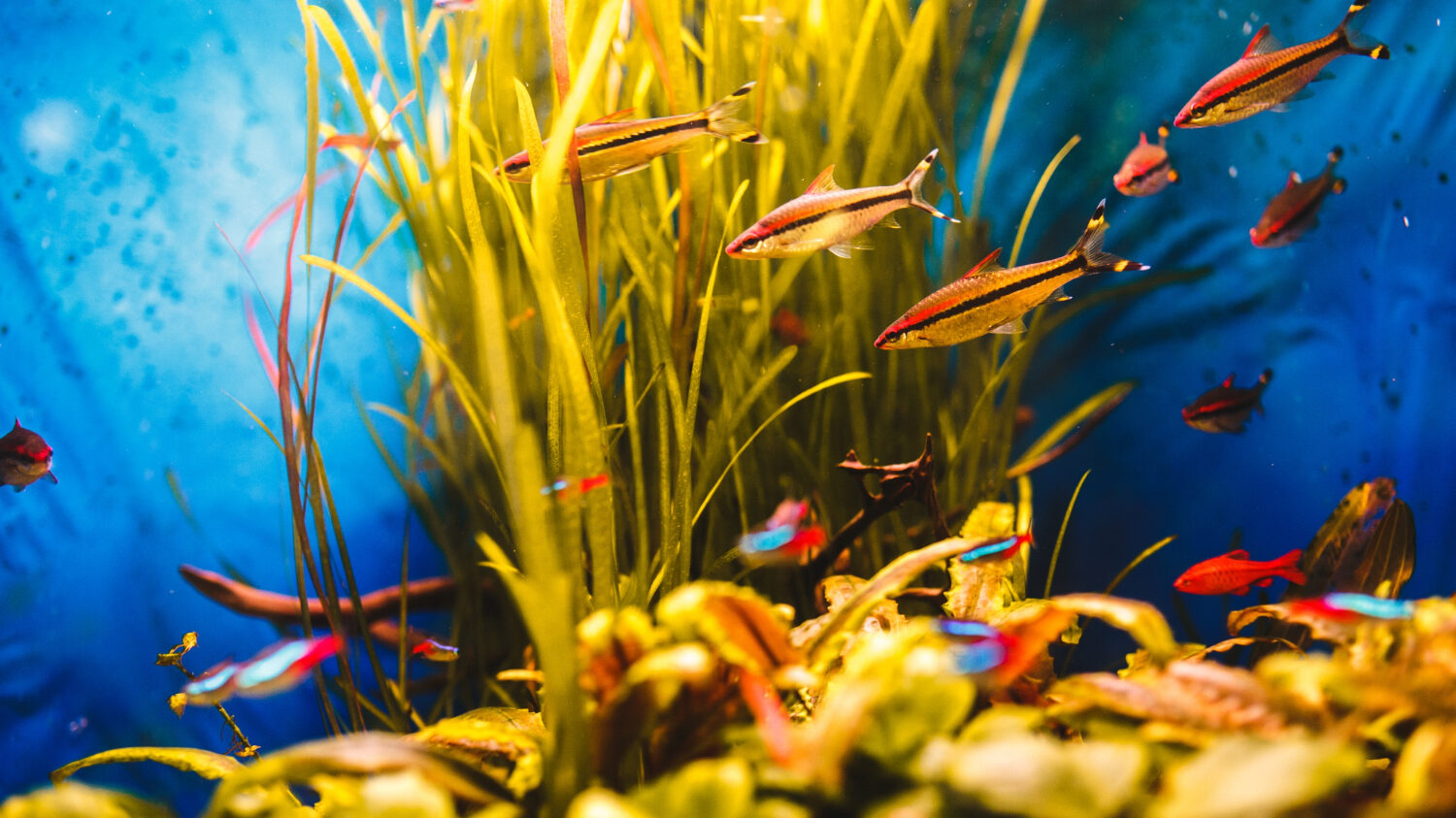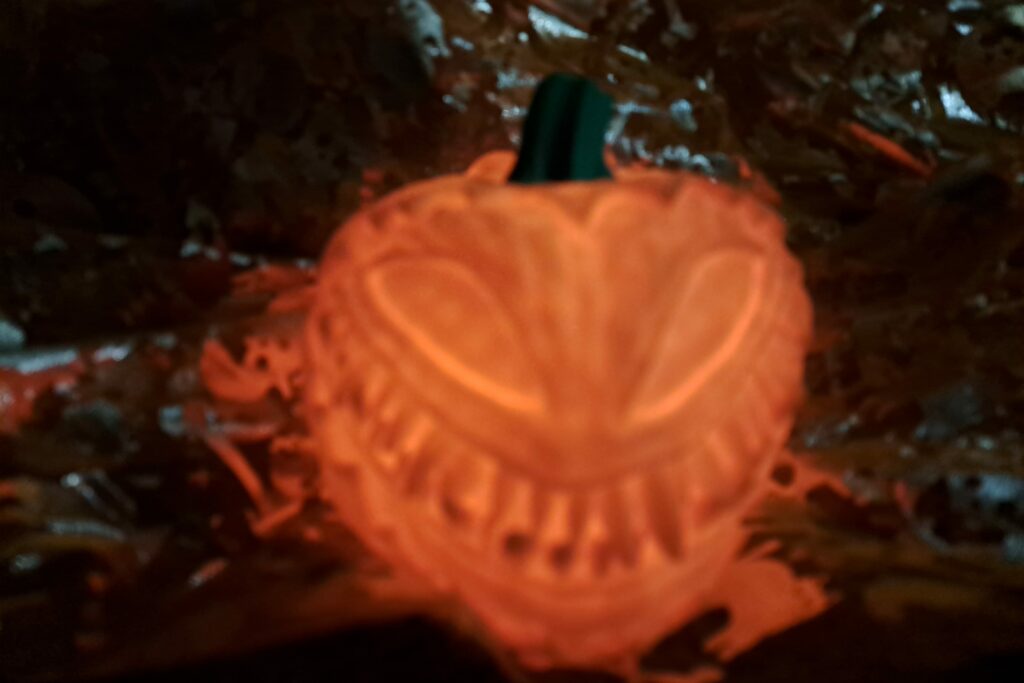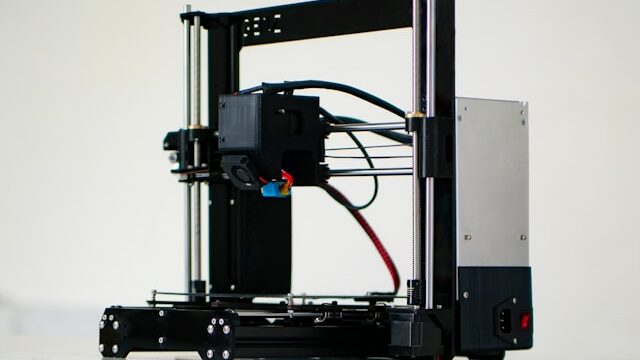Would you like to create 3D prints for your aquarium but are unsure about the elements you need to pay particular attention to? At Imprimy, we are here to answer all your questions.

What are the applications of 3D printing in the field of aquariums?
3D printing can be applied to aquariums by creating custom 3D decorations, manufacturing functional accessories, or designing habitats.
3D printing of custom decorations
3D printing allows for the design of custom aquarium decorations, tailored to the specific needs of your aquatic environment. Whether it’s caves, arches, fish hideouts, or elements inspired by underwater landscapes, this technology offers unmatched design freedom.
The materials used must be non-toxic and water-resistant, such as certain resins and plastics suitable for aquatic use. With this custom approach, it is possible to recreate a unique decor while ensuring the safety and well-being of fish and other marine creatures.
Custom 3D-printed functional accessories for aquariums
3D printing enables the creation of custom functional accessories for aquariums, providing solutions tailored to the specific needs of aquarists. It is possible to manufacture plant supports, filtration systems, lighting rails, separation grids, or even fully customized food dispensers.
The materials used must be safe for aquatic life, such as certain BPA-free and water-resistant plastics. With this technology, each element can be designed to seamlessly integrate into the aquarium, optimizing both the aesthetics and functionality of the aquatic ecosystem.
3D-printed habitats for aquatic animals
3D printing offers the possibility to create custom habitats for aquatic animals, replicating caves, tunnels, artificial reefs, or any other structure suited to the needs of fish, shrimp, or amphibians. These shelters help recreate a natural-looking environment, promoting the well-being and instinctive behavior of the species. The materials used must be non-toxic, water-resistant, and compatible with aquatic life, such as certain resins or specific plastics.
With this technology, it is possible to adapt the size, shape, and texture of habitats to perfectly match the requirements of each species, while adding a unique aesthetic touch to the aquarium.
What are the advantages of 3D printing for aquariums?
3D printing offers the advantage of allowing you to customize your 3D prints, reduce costs for these items, and minimize the environmental impact of these objects.
Customization of 3D prints for aquariums
The customization of 3D prints for aquariums allows for the creation of unique elements tailored to the specific needs of each aquatic environment. Whether it’s custom decorations, fish habitats, functional accessories, or specific structures like plant supports or separators, 3D printing offers complete flexibility in design, size, and materials.
It is essential to use materials that ensure the safety of aquatic animals. With this technology, every aquarium can be transformed into an aesthetically pleasing, optimized space perfectly suited to its inhabitants.
Cost reduction compared to traditional equipment
3D printing allows for a significant reduction in costs compared to traditional equipment, particularly in areas such as aquarium keeping, decoration, or custom accessories. By eliminating intermediaries and traditional manufacturing costs, this technology enables the production of customized objects at a lower cost while optimizing material usage.
Additionally, the ability to print on demand avoids storage and waste, making this solution more economical and eco-friendly. In the case of aquariums, for example, habitats, supports, and functional accessories can be created at a lower price than standard market products, while being perfectly tailored to the specific needs of each user.
Reduced environmental impact compared to traditional equipment
3D printing reduces the environmental impact compared to traditional equipment for aquariums by minimizing material waste, optimizing local production, and using eco-friendly materials.
Unlike traditional industrial methods, which often require molds, assembly, and long-distance transport, 3D printing allows for on-demand manufacturing, thereby reducing waste and CO₂ emissions. Additionally, some biodegradable filaments or those made from recycled plastics offer a more sustainable alternative that is respectful of aquatic ecosystems. This technology enables the creation of customized accessories and habitats while minimizing their ecological footprint.
The creation of unique solutions for aquariums through 3D printing
L’impression 3D permet de concevoir des solutions uniques pour les aquariums, adaptées aux besoins spécifiques de chaque environnement aquatique. Grâce à 3D printing makes it possible to design unique solutions for aquariums, tailored to the specific needs of each aquatic environment. With this technology, it is possible to create custom-made habitats, personalized decorations, and functional accessories, such as:
- Plant holders,
- Filtration systems,
- Tank dividers,
- Etc.
Unlike standardized commercial products, 3D printing offers total design freedom, optimizing both the aesthetics and functionality of the aquarium. Moreover, by using suitable and safe materials for aquatic life, 3D printing represents an innovative, cost-effective, and eco-friendly solution.
What are the limitations of 3D printing for aquariums?
Creating 3D prints for your aquarium comes with certain limitations, such as costs, variable durability, and specific maintenance requirements.
The cost of 3D-printed equipment
The cost of 3D-printed aquarium equipment is generally lower than that of traditional equipment, thanks to on-demand manufacturing and material optimization. By eliminating the costs associated with mass production, storage, and transportation, 3D printing helps reduce production costs.
However, the price may vary depending on the complexity of the design, the materials used (plastics, resins, eco-friendly materials), and the size of the printed objects. Overall, this technology allows for the creation of custom accessories at a lower cost than standard products, while offering a high level of customization, making it both an economical and flexible solution.
The durability of the materials used once submerged
The durability of 3D-printed materials once submerged in water largely depends on the type of materials chosen. Plastics like PLA or PETG are often used for their solid characteristics but may deteriorate over time due to prolonged humidity.
More water-resistant materials, such as special resins or anti-corrosive plastics, are often preferred to ensure better longevity underwater. Additionally, some materials are treated to be non-toxic and do not release harmful substances for aquatic animals.
In general, when correctly selected, 3D-printed materials can offer great durability while being resistant to water, chemicals, and temperature changes in aquariums.
The skills required for the design of 3D objects for aquariums
The skills required for the design of 3D objects for aquariums include:
- 3D modeling: Proficiency in software like AutoCAD, Fusion 360, or Blender to create detailed and accurate designs.
- Understanding of materials: Knowledge of different materials suitable for aquarium use, such as plastics, resins, and eco-friendly options.
- Knowledge of water dynamics: Understanding how objects interact with water in terms of buoyancy, corrosion, and long-term durability.
- Aquarium design principles: Familiarity with the specific needs of aquariums, like aesthetic appeal, functional design, and the safety of aquatic life.
- 3D printing techniques: Knowledge of different printing methods and settings to ensure the successful creation of durable and functional items.
These skills are essential to creating effective, safe, and aesthetically pleasing 3D-printed objects for aquariums.
Maintenance and care of 3D-printed aquarium equipment
Maintenance and care of 3D-printed aquarium equipment involves the following steps:
- Cleaning: Regularly clean 3D-printed equipment to prevent the buildup of algae, dirt, or mineral deposits. Use non-toxic cleaning agents or warm water to avoid damaging the materials.
- Inspection: Periodically inspect for any cracks, wear, or corrosion that may occur over time, especially if the equipment is exposed to prolonged moisture or harsh conditions.
- Reinforcement: If needed, reinforce the equipment with additional coatings or treatments to improve durability and water resistance.
- Avoid harsh chemicals: Never use abrasive or toxic chemicals that could damage the material or harm the aquatic life in your aquarium.
- Testing: Ensure the equipment continues to function properly, especially for items like filters, pumps, or lighting fixtures, by regularly testing their performance.
With proper maintenance, 3D-printed aquarium equipment can offer long-lasting and safe use in the aquatic environment.
How to get started with 3D printing for your aquarium?
To start 3D printing objects for your aquarium, you need to choose or own the right 3D printer, select the right materials, and design models that suit you.
Choose the right 3D printer to create aquarium elements in 3D
Choosing the right 3D printer to create aquarium elements depends on several essential criteria, including print quality, material compatibility, and the size of the objects to be printed. An FDM (Fused Deposition Modeling) printer is often ideal for beginners, offering good print quality at an affordable price, particularly for small accessories and decorations.
For more complex parts and better precision, an SLA (stereolithography) printer provides high-quality finishes, especially for the fine details of decorative objects. It is also crucial to ensure that the chosen printer is compatible with water-resistant materials, such as PETG, moisture-resistant PLA, or specialized resins for durable and non-toxic objects.
Finally, for larger elements, like reef structures or custom habitats, choose a printer with a large printing volume to work on large pieces without compromising on quality.
Select the appropriate materials to 3D print elements for aquariums
To 3D print elements for aquariums, it is essential to choose materials that are water-resistant, non-toxic, and suitable for the aquatic environment. Here are some popular materials and their characteristics:
- PETG (Polyethylene Terephthalate Glycol): This is one of the most commonly used materials for objects in contact with water. It is moisture-resistant, strong, and non-toxic, making it ideal for aquatic accessories and decorations. It is also relatively easy to print and offers good durability underwater.
- PLA (Polylactic Acid): Although biodegradable, PLA is sometimes used for aquatic objects, but it can degrade underwater over time. If you choose PLA, it is essential to check that it is specially formulated to resist moisture and prevent rapid degradation.
- ABS (Acrylonitrile Butadiene Styrene): This material is more resistant and durable than PLA, but it can be more challenging to print. ABS can withstand prolonged moisture conditions, making it a good option for solid objects in aquariums, such as supports or filters.
- UV Resin: Primarily used for SLA (stereolithography) printers, this resin can provide precise detail for fine decorations. However, it must be carefully selected to ensure that it is non-toxic and water-resistant once cured.
- Nylon: Very strong and water-resistant, nylon is ideal for robust structures in aquariums, such as grids or filtration supports. However, it can be more difficult to print and requires a stable working environment to avoid warping.
It is crucial to ensure that the materials chosen for 3D printing are safe for aquatic animals and do not release toxic substances into the water. Additionally, some materials may require an extra coating or special treatment to ensure their longevity in water and prevent rapid degradation.
Designing 3D models for your aquarium
Designing 3D models for your aquarium offers great creative and functional freedom, allowing you to customize the aquatic space according to your preferences and the needs of its inhabitants. Here are some essential steps to successfully create your models:
- Choose the goal: Determine the purpose of your 3D model, whether it is for decorations, fish habitats, functional accessories (like supports for plants or filters), or separating elements. Each type of object will have specific requirements in terms of size, shape, and functionality.
- Use 3D modeling software: To design your models, you can use software like Blender, Fusion 360, or Tinkercad. These tools allow you to create both detailed and personalized designs, adjusting the shape, texture, and dimensions of your objects to ensure they fit perfectly in the aquarium.
- Consider materials and functionality: Choose materials suitable for the aquatic environment, like PETG or moisture-resistant PLA, to ensure the durability of your objects underwater. Also, consider the safety of aquatic animals: make sure the model has no sharp edges, does not release toxic substances, and is stable in the water.
- Optimization for printing: Once the model is designed, it needs to be optimized for 3D printing by adjusting parameters such as wall thickness, infill, and object orientation to minimize the risk of deformation and ensure the strength of the final product.
- Prototyping and adjustments: Before starting the final production, it can be helpful to print a small-scale prototype to test the fit, functionality, and aesthetics. This allows for necessary adjustments before the final print.
Creating 3D models for an aquarium gives you the opportunity to adapt the environment to the specific needs of your fish and other aquatic inhabitants, while adding a unique and functional aesthetic touch.
Installing your 3D prints in your aquarium
Installing your 3D prints in your aquarium requires careful preparation to ensure the safety of aquatic animals and the harmonious integration of objects into the aquatic ecosystem. Here are some key steps to follow:
Preparation of printed objects
Before installing the printed elements, make sure they are clean and free of printing residues, dust, or particles that could contaminate the water. You can clean the objects using a soft cloth or a non-abrasive brush, and disinfect them if necessary to avoid any contamination risk.
Checking buoyancy and stability
Some 3D printed objects may be lighter than expected and could float on the surface. Therefore, it is essential to test the buoyancy before installation. If necessary, you can add weight to the objects using non-toxic elements (such as stones or suitable mounting supports) to keep them at the bottom of the aquarium.
Placement in the aquarium
When installing, think about the strategic placement of each object. For example, decorative elements should be positioned in a way that doesn’t obstruct the swimming space of the fish or block the filters and water currents. Fish habitats or hiding spots should provide areas of shade and safety, but still be easily accessible for maintenance.
Monitoring and adjustments
After installation, observe how the elements behave in the aquarium, especially in terms of buoyancy, stability, and durability in the water. Also, check that the installation does not affect the water quality and ensure there is no excessive formation of algae or other undesirable substances on the printed objects.
Safety of aquatic inhabitants
Make sure that the printed objects have no sharp edges or dangerous contours for the fish. The materials used should be non-toxic and should not interfere with the water parameters, such as pH, hardness, or temperature.
By following these steps, you can ensure that your 3D prints integrate functionally and aesthetically into your aquarium, while ensuring the safety and well-being of the aquatic animals.
Conclusion: 3D prints for aquariums
3D printing offers a unique opportunity to customize and enhance your aquarium, providing both functional and aesthetic elements tailored to the needs of your aquatic environment. Whether for decorations, habitats, or accessories, 3D printed objects allow for creativity and personalization.
However, it is crucial to carefully choose materials, ensure the safety of aquatic life, and monitor the integration of the printed objects within the aquarium to maintain a healthy environment for your fish and other inhabitants.
Picture by freepic.diller via Freepik.
The articles published on Imprimy.com are for informational purposes only. They are intended to provide general advice and information related to 3D printing. Imprimy.com cannot be held responsible for the results obtained or the consequences arising from the application of the shared information. We recommend always checking the specific instructions for your hardware and materials before use.


